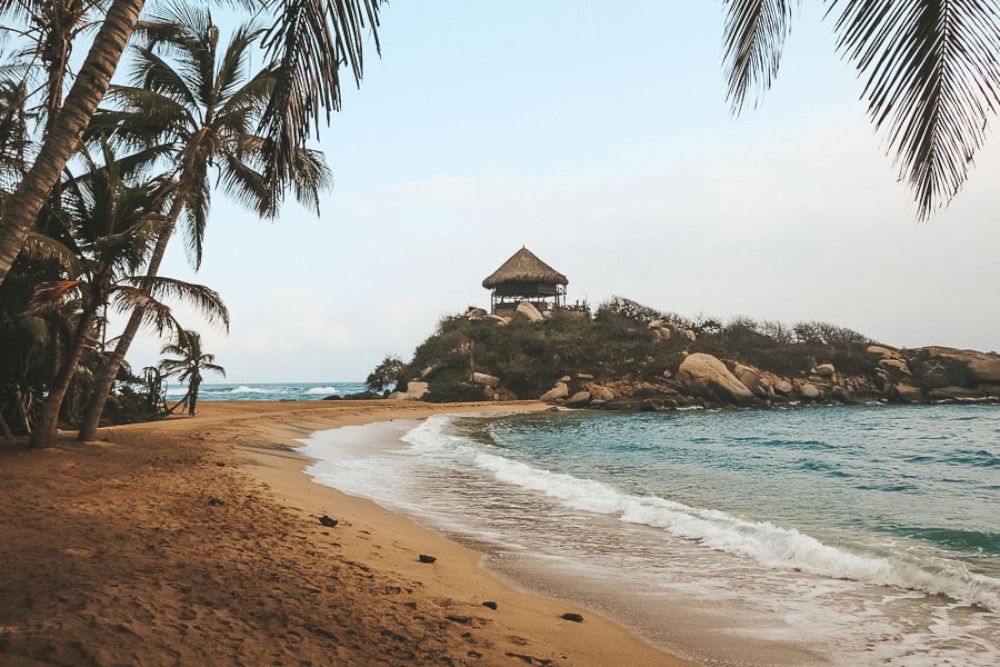
What to do in Santa Marta? Discover the beautiful Tayrona Park and all our tips for enjoying the place.
Much less colonial than Cartagena or colorful than Salento, Santa Marta is a stopover to discover the lost city, the “ciudad perdidad” or the Tayrona National Park features white sandy beaches, coral, mangroves, reptiles and numerous mammals.
I invite you to read all our other articles on Colombia to help you prepare for your trip:
- Charming villages: Salento, Cocora Valley, Villa de Leyva and Raquira
- The Guajira region and encounters with the Wayuu people
- What to do in Cartagena de Indias?
- Playa blanca, why we are disappointed with this beach
- A cooking class in Cartagena
- Medellin, what to do and where to stay?
- Explore the Armenia and Salento regions, renowned for their coffee production
- Guatapé and its unusual, charming hotel
- Budget and itinerary for a 19-day trip
Colombia is an ideal destination for ecotourism. Indeed, it boasts 26 national nature parks, offering travelers the chance to admire a wealth of flora and fauna, from rainforests and tropical rainforests to arid zones, immense deserted beaches and mangroves. Tayrona National Park is the country’s second most visited park, behind Rosario and San Bernardo National Coral Park. It’s become a must-see, so let’s explore it!
Welcome to Santa Marta, starting point for exploring the park and a charming little Colombian tourist town. Travelers can put down their suitcases for one or more nights, as the city abounds with nightclubs, bars and restaurants, in a salsa, rock and Latino atmosphere. We tested the bendito café a nice place for a snack. Not far from the square is the local night market for hearty, inexpensive dishes. For a tasty lunch, we fell for the Ouzo restaurant, offering accessible Mediterranean cuisine in front of a beautiful little square with the air of a European city. (CRA 3 NO 19-29)
SOMMAIRE DE L'ARTICLE :
| WHERE IS TAYRONA PARK AND HOW DO I GET THERE?
| HIKING IN THE PARK
Once you’ve paid your fee, you can either walk right up to the park entrance if you have time to spare, or take a short bus to avoid the 45-minute walk and start the hike a little further on. If you absolutely don’t want to walk in the park, you can rent a horse at the entrance.
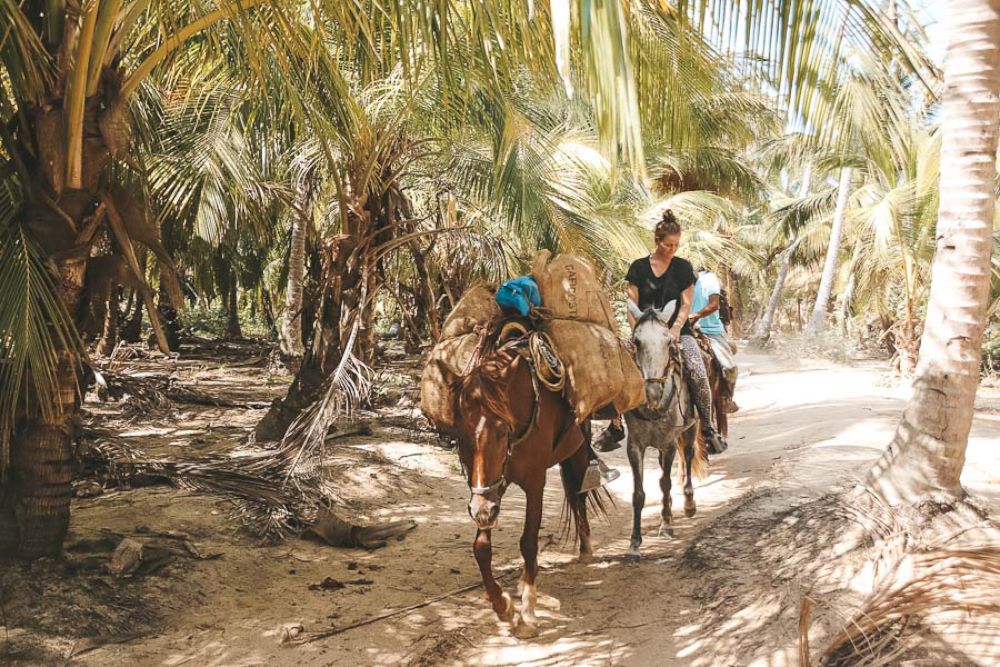
The Tayrona is a popular spot for tourists and locals alike, so don’t expect to be alone in the world! Some choose to go there for a day to picnic and swim, while others spend 2 or 3 days there. We stayed there for 2 days/1 night without booking accommodation and walked straight to Cabo San Juan from Guia to enjoy Cañaveral beach. If you plan to visit the park in one day, you’ll need to arrive very early in the morning to leave the park by 3:30 pm at the latest. Between transport, walking and swimming, it takes several hours to get the most out of it.
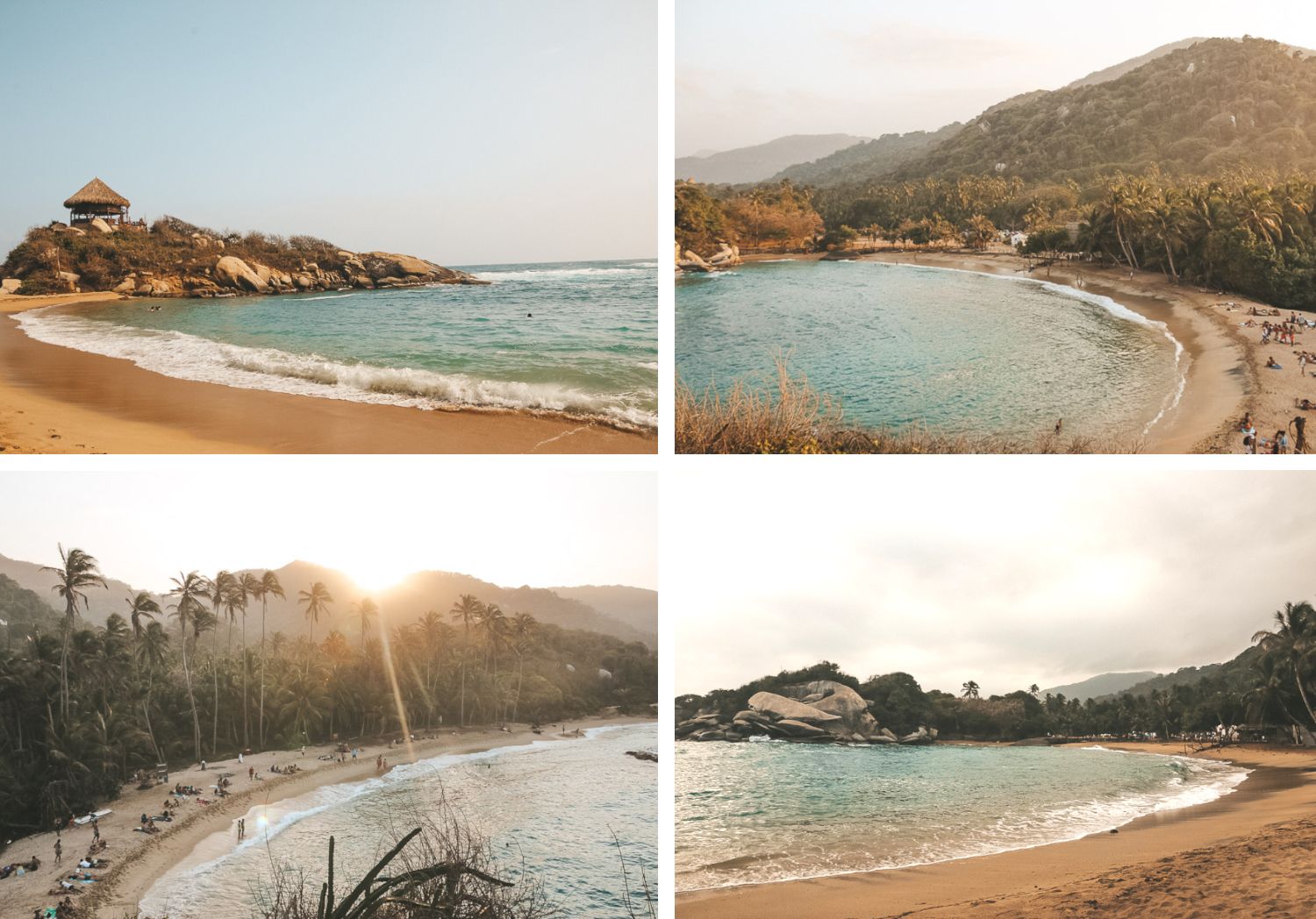
There are several stops along the way, including Arrecifes and Piscina. Please note theArrecifes is closed to swimming due to strong currents! It was under one of the footbridges that we spotted a rather large caiman!
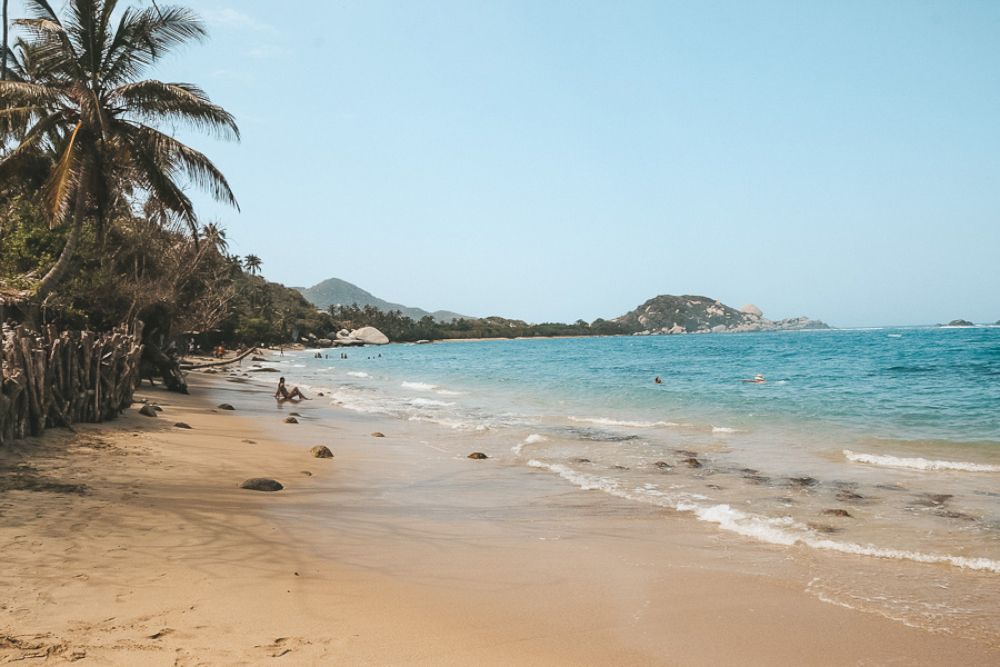
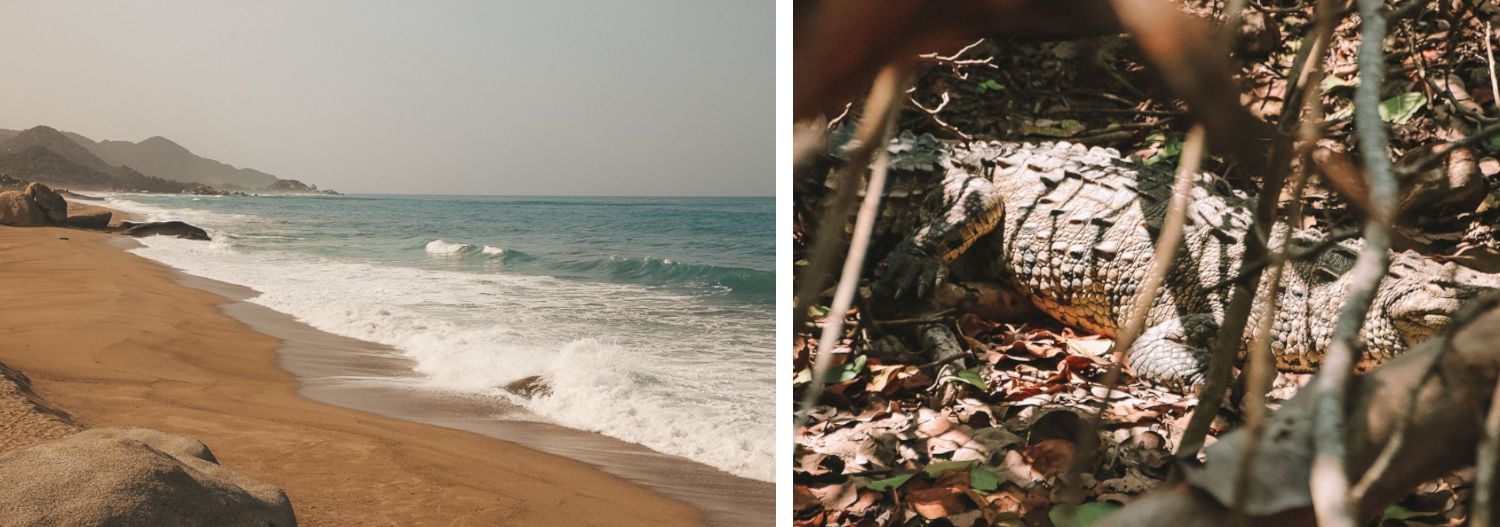
| SLEEPING IN TAYRONA PARK
When you arrive at the Park, at the entrance you must attend a compulsory briefing on the Tayrona National Park. The route will be presented with instructions to follow, and various points for stopping and sleeping. Please note that you cannot book accommodation on Cañaveral beach!
The beach of Cañaveral is located in Tayrona National Park. This is the Park’s most famous beach, because of its slightly more eccentric setting and perched hut, but it’s often the most popular with tourists! To get there, you have to cross lush vegetation and coconut palms. The route is marked out, easy and takes all in all 2 good hours by walking normally from the parking lot.
The tent site is quite large, so you can either rent tents or bring your own and pay the rental fee. For those who don’t have their own equipment, you can rent hammocks in a huge covered area (around 50). Please note that check-in only from 1.30pm-2pm and the queue is already long at 1pm because everyone wants to sleep there!
For those who wish to sleep in the hut, this is possible, as it’s no more expensive than a classic hammock. But there are 2 drawbacks: you have to arrive first to choose your hammock and the hut is open on both sides, so when the wind blows (and it often does), you can get very, very cold! Remember to take the sleeping bag,yes, yes, I’m not kidding!
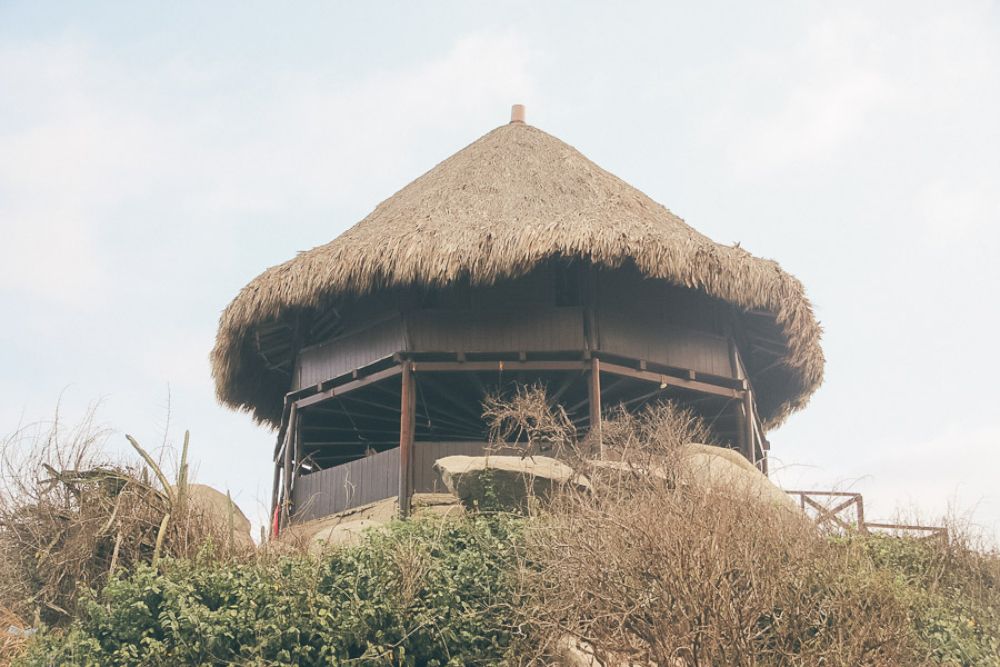
| WHERE TO SWIM IN TAYRONA PARK
You can swim at Bahia Concha, the most popular beach for bathers, but also Bahia Chengue, a tiny beach, Bahia Gayraca, for snorkeling and diving., Neguanje, the largest of all the beaches in Tayrona Park, Bahia Cinto, Guachakyta, one of the smallest beaches in Tayrona Park, Cape San Juan del Guia, the most famous beach in the whole Park with its little hut, the Piscina, Arenilla, the beach between Arrecife and La Piscina and finally Cañaveral.
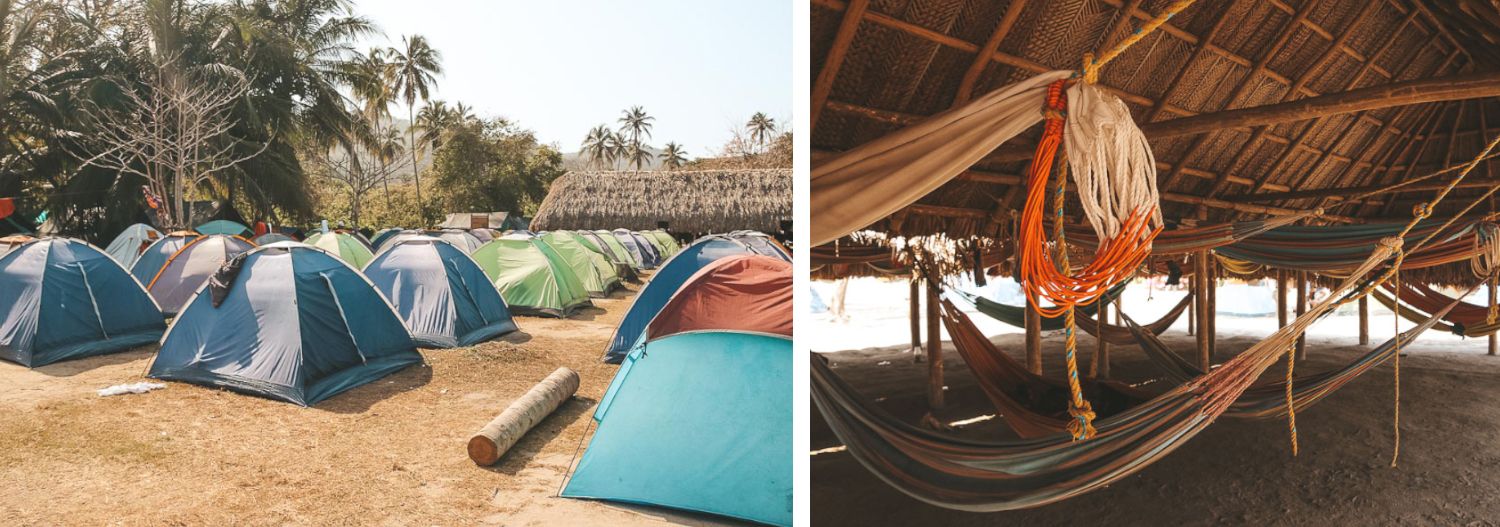
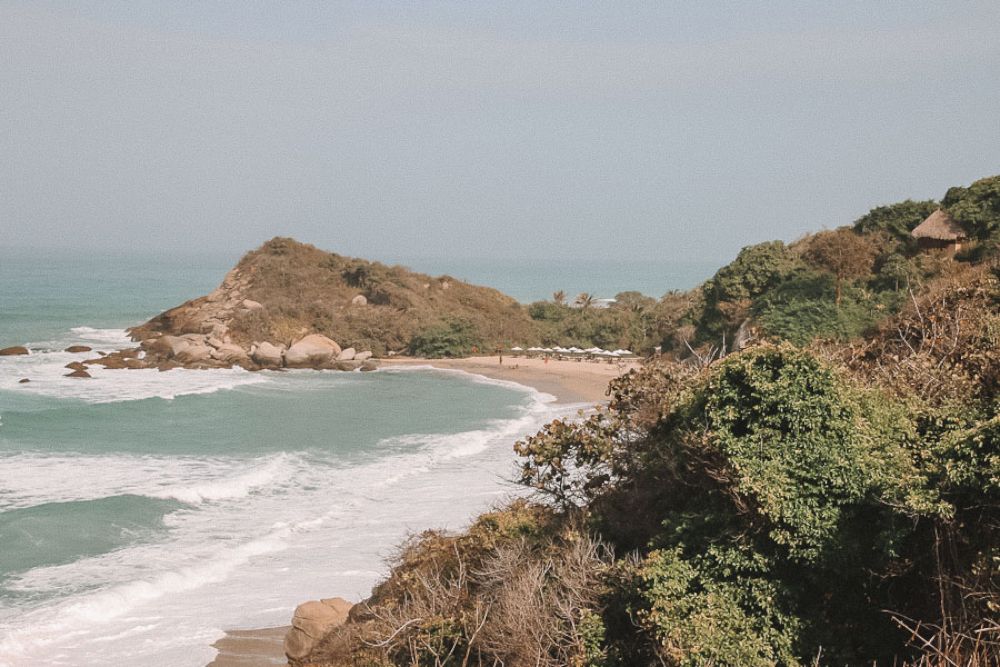
The Tayrona is a beautiful wild place, surrounded by mountains, countless wild beaches, in absolute calm but which for us was a little disappointing due to the heavy tourist presence in January 2015. The clientele was quite young, between 18 and 25, and came to party! the camping from Cañaveral was packed with people: in the restaurant or on the beach, it was hard to get a little corner to yourself! This is one of the effects of tourism: every year, the destination attracts new, curious visitors from the 4 corners of the world to discover this warm-hearted country, which is one of our favorites. And do you know Colombia? What are your impressions?
Before you leave, don’t forget to read all our other articles on Colombia to help you prepare for your trip:
- Charming villages: Salento, Cocora Valley, Villa de Leyva and Raquira
- The Guajira region and encounters with the Wayuu people
- What to do in Cartagena de Indias?
- Playa blanca, why we are disappointed with this beach
- A cooking class in Cartagena
- Medellin, what to do and where to stay?
- Explore the Armenia and Salento regions, renowned for their coffee production
- Guatapé and its unusual, charming hotel
- Budget and itinerary for a 19-day trip
